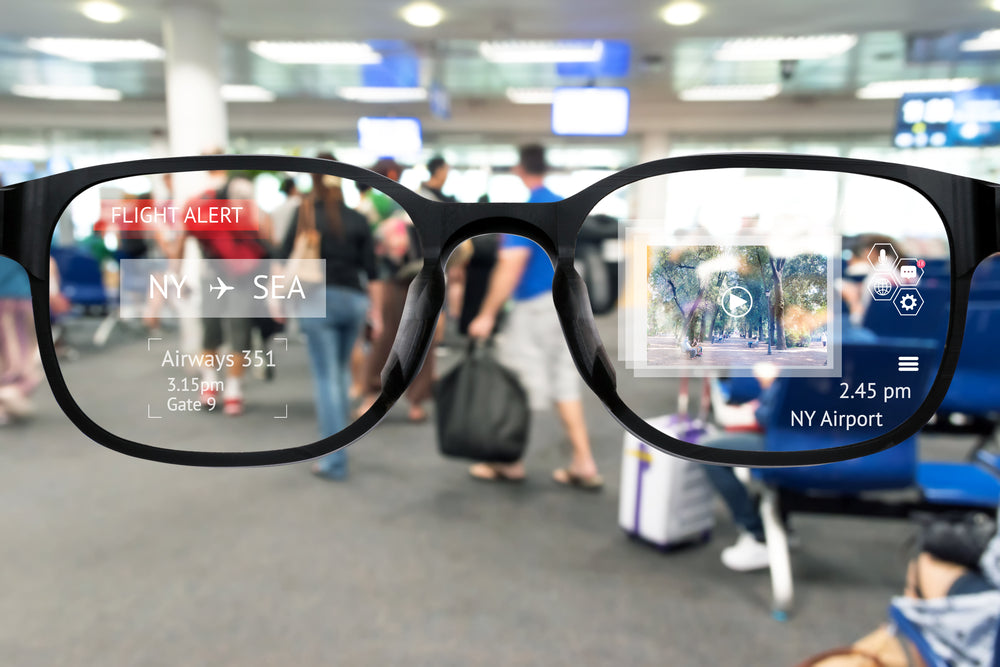
In the dynamic realm of technology, augmented reality (AR) glasses have emerged as a game-changing innovation, promising to reshape how we perceive and interact with the digital world. As the demand for AR glasses soars, a plethora of display technologies have emerged, each catering to specific types of AR glasses and offering unique experiences. In this article, we will embark on an exciting journey through the various types of AR glasses, exploring the display technologies they utilize, including OLEDs, LCDs, waveguides, and more.
Types of Augmented Reality Glasses:
1. See-Through AR Glasses:
See-through AR glasses are at the forefront of the AR revolution, allowing users to experience a blend of virtual and real-world content. These glasses feature transparent displays that leverage advanced technologies like OLED (Organic Light Emitting Diode) and LCD (Liquid Crystal Display) to overlay digital information onto the user's field of view. OLEDs, with their self-emissive pixels and vibrant colors, deliver rich and vivid augmented visuals, seamlessly merging the virtual and real environments for applications like navigation, information display, and entertainment.
2. Pass-Through AR Glasses:
Pass-through AR glasses offer a unique perspective by integrating live video feeds from cameras into the augmented experience. These glasses utilize cameras and advanced display technologies like OLEDs and LCDs to capture the user's surroundings and present them alongside computer-generated content. OLEDs, renowned for their deep blacks and high contrast ratios, enhance the visual fidelity of the augmented elements, making pass-through AR glasses ideal for medical procedures, industrial training, and remote collaboration.
3. Opaque AR Glasses:
In the realm of total immersion, opaque AR glasses shine as they completely block the user's view of the real world, replacing it with an artificial environment. These glasses boast non-transparent displays, often employing OLED or LCD technologies to create captivating and interactive virtual simulations. OLEDs' pixel control and fast response times provide seamless rendering of high-quality 3D graphics, making opaque AR glasses a perfect fit for gaming, immersive storytelling, and virtual training experiences.
4. Mixed Reality (MR) Glasses:
Taking AR to a whole new level, mixed reality glasses blend the digital and physical worlds with remarkable fluidity. MR glasses employ sophisticated display technologies like OLEDs and LCDs in conjunction with advanced waveguide technology. OLEDs' unparalleled color reproduction and brightness, combined with waveguides' ability to guide and manipulate light, enable MR glasses to overlay virtual objects into the real-world environment. This creates an astonishingly immersive experience for design visualization, interactive entertainment, and innovative industrial applications.
Display Technologies for AR Glasses:
1. OLED (Organic Light Emitting Diode):
OLED technology stands out for its self-emissive pixels, offering higher contrast ratios, faster response times, and exceptional color accuracy. It is extensively used in see-through AR glasses, pass-through AR glasses, and opaque AR glasses to render stunning and lifelike augmented content, enriching the overall AR experience.
2. LCD (Liquid Crystal Display):
LCD technology, known for its cost-effectiveness and widespread usage, plays a significant role in AR glasses, particularly in see-through and pass-through AR glasses. With advancements in LCD technology, including miniaturization and improved color performance, LCD-based AR glasses deliver immersive visuals while striking a balance between performance and affordability.
3. Waveguide Technology:
Waveguide technology is a pivotal component in modern AR glasses, especially mixed reality glasses. It employs optical waveguides to direct and manipulate light, allowing virtual content to blend seamlessly with the user's real-world view. The combination of OLED or LCDs with waveguide technology enables MR glasses to achieve impressive visual fidelity and unparalleled user immersion.
In conclusion, the world of augmented reality glasses continues to evolve, driven by a myriad of display technologies that push the boundaries of what's possible. Whether it's the vivid colors of OLEDs, the versatile usage of LCDs, or the optical magic of waveguide technology, AR glasses are unlocking new frontiers of digital interaction and human experience. As we step into this exciting future, we can look forward to a world where augmented reality seamlessly intertwines with our daily lives, empowering us with boundless possibilities and enriching our perception of reality like never before. So, embrace the wonders of AR glasses and embark on an immersive journey of discovery and innovation!
Read more

In the ever-evolving world of AR, VR, and MR, two key players hold the key to seamless light transmission: optical fibers and waveguides. Both guide light efficiently using total internal reflect...

Principle As shown in the figure above, the coupling light into the waveguide is usually a reflector or prism. When the light reaches the front of the glasses after multiple rounds of total reflec...



Leave a comment
This site is protected by hCaptcha and the hCaptcha Privacy Policy and Terms of Service apply.